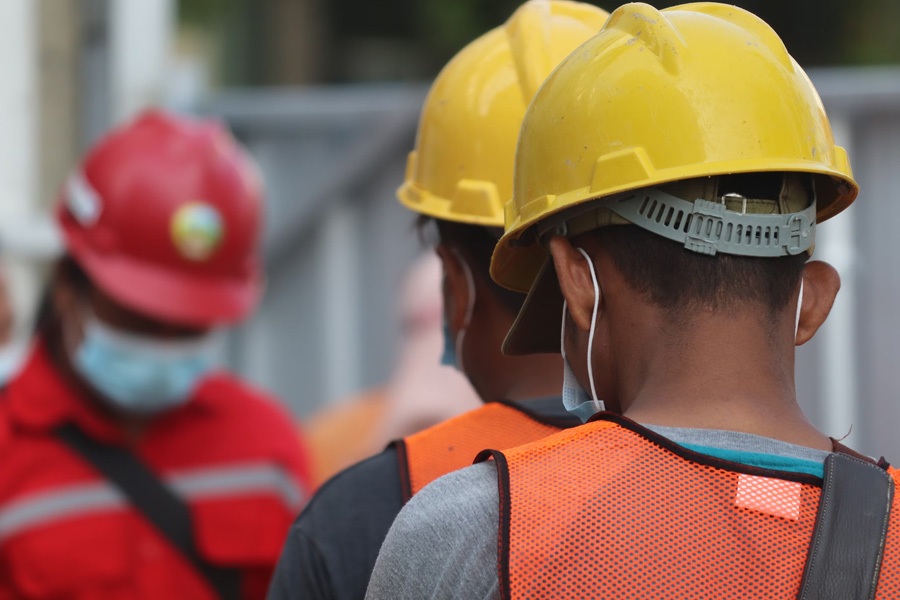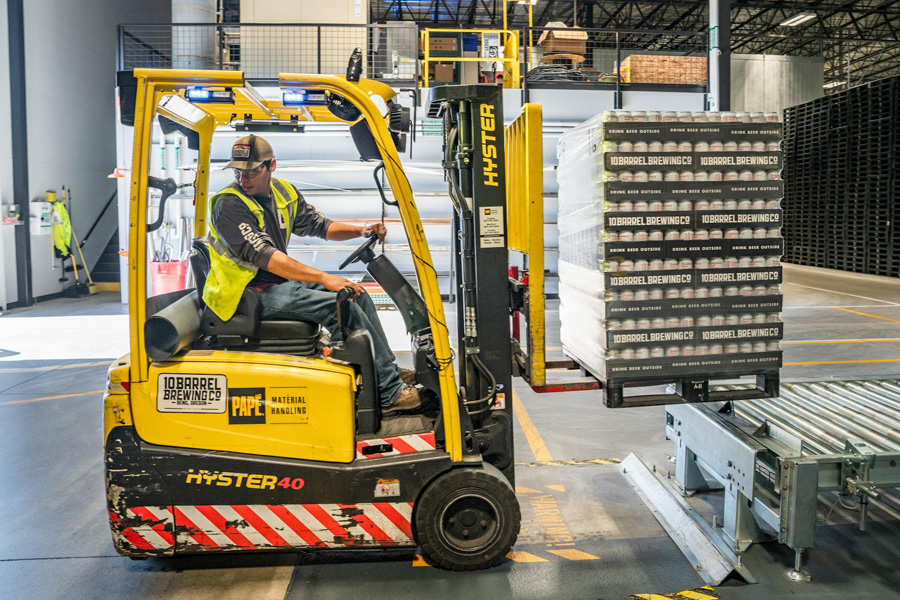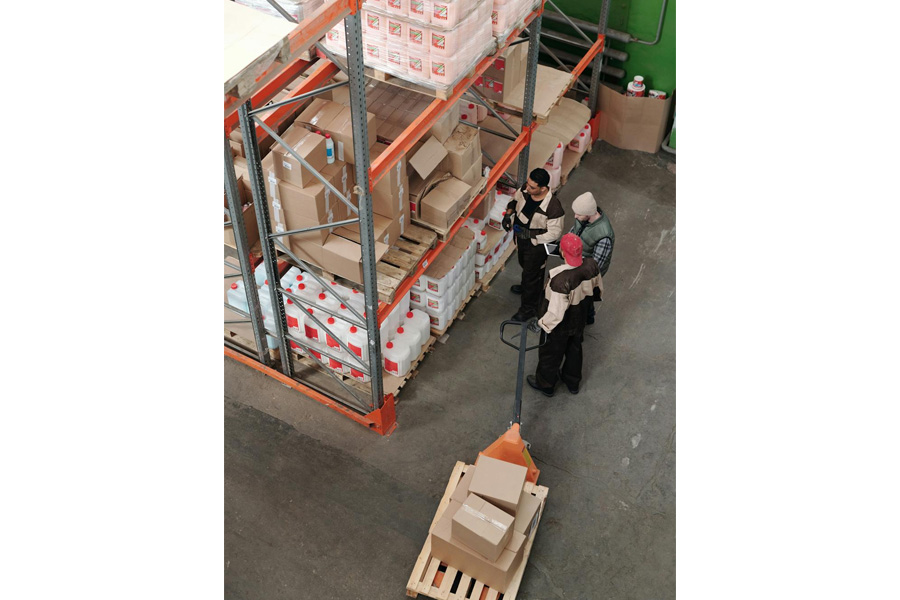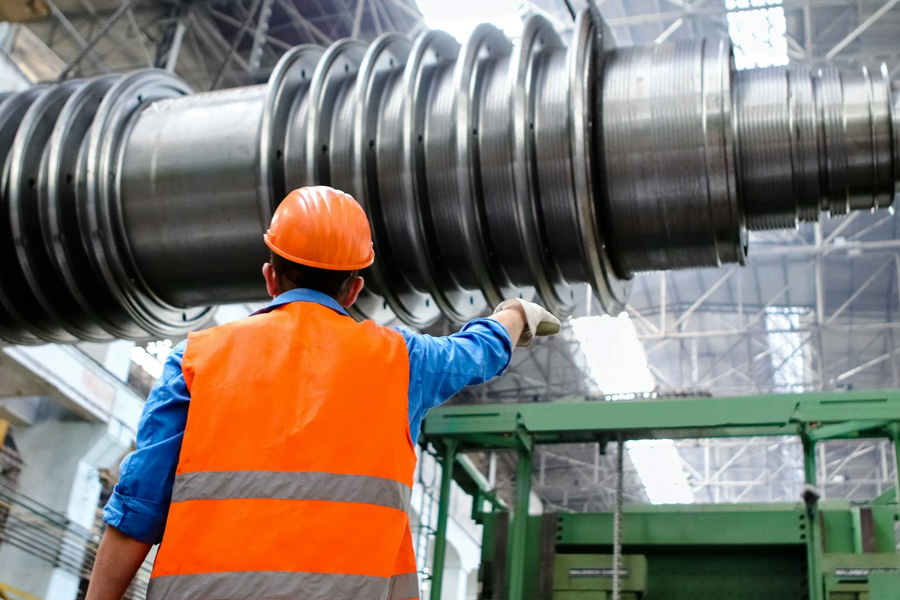Warehouse Safety: Training, Importance, & Best Practices
Warehouses are vital hubs for countless industries, keeping products moving and economies thriving. Even though they can be busy and seem a little messy at times, warehouses need to be safe places to work.
Injuries can not only devastate individual workers but also disrupt operations and impact your bottom line. Fortunately, a proactive approach to safety can significantly reduce risks.
This comprehensive guide explores warehouse safety, its significance, legal regulations, and best practices. Continue reading to get your hands on the information and resources to create a warehouse that prioritizes both productivity and safety!
Why is Warehouse Safety So Important?
An efficient warehouse is where forklifts zip by, pallets reach towering heights, and workers navigate a maze of activity. Still, while efficiency is crucial, it can’t come at the expense of safety.
Warehouses pose a unique set of risks, but with proper training, these hazards can be significantly mitigated.
Here’s a look at the top 10 warehouse safety risks and how safety courses empower workers to stay safe:
1. Slips, Trips, and Falls
Uneven floors, spills, and cluttered walkways are a recipe for disaster. Safety courses teach proper walking techniques, hazard identification, and housekeeping best practices.
2. Forklift Mishaps
Forklifts are powerful machines, and improper operation can lead to collisions, tip-overs, and crushed toes. Training equips operators with safe driving practices, load-handling techniques, and pre-operation checks.
3. Musculoskeletal Disorders (MSDs)
Repetitive lifting, carrying, and twisting motions can cause long-term pain. Safety courses teach proper lifting techniques, ergonomics, and the importance of proper posture to prevent injuries.
4. Falling Objects
Unsecured loads, overloaded shelves, and unstable stacks can topple with devastating consequences. Training emphasizes proper load securing, safe stacking procedures, and hazard communication to warn others.
5. Electrical Hazards
Exposed wires, faulty equipment, and water can create a dangerous electrical environment. Safety courses educate workers on identifying electrical hazards, using GFCIs, and safe work practices around electrical equipment.
6. Contact with Hazardous Materials
Many warehouses store chemicals, flammables, or irritants. Safety training covers proper handling procedures, Personal Protective Equipment (PPE) use, and emergency response protocols for spills or leaks.
7. Fires
Flammable materials, electrical issues, and improper storage can spark a fire. Training equips workers with fire extinguisher use, evacuation procedures, and fire prevention best practices.
8. Working at Heights
Ladders, mezzanines, and order picking at high levels pose a significant fall risk. Safety courses teach proper ladder use, fall protection measures, and safe work practices when working at heights.
9. Machinery and Equipment
From conveyor belts to packaging machines, various equipment can cause injuries. Training covers proper operation procedures, lockout/tagout protocols, and hazard identification for different machinery.
10. Pedestrian-Vehicle Collisions
The constant movement of forklifts and other vehicles puts pedestrians at risk. Safety courses emphasize clear communication, designated walkways, and the importance of staying alert in traffic zones.

OSHA’s Regulations and Standards for Warehouse Safety
Unfortunately, warehouses can harbor a multitude of hazards, as discussed earlier. This is where OSHA (Occupational Safety and Health Administration) steps in.
OSHA implements and enforces safety standards across various industries, and warehouses are certainly not exempt. Here’s a glimpse into some key OSHA standards relevant to warehouse safety:
Material Handling and Storage (1910.176)
This regulation lays the foundation for the safe handling of materials in your warehouse. It covers aspects like proper stacking techniques, weight limits, and aisle width requirements to prevent collisions and tipping hazards.
Walking-Working Surfaces (1910.21)
Slips, trips, and falls are some of the most common warehouse accidents. This standard outlines best practices for keeping floors clear, well-maintained, and free of clutter to minimize these risks.
Personal Protective Equipment (PPE) (1910.132)
Depending on the specific operations in your warehouse, certain PPE might be mandatory. This standard ensures workers have access to and utilize the appropriate equipment like safety glasses, gloves, respirators, or hard hats when necessary.
Hazard Communication (1910.1200)
If your warehouse stores or handles hazardous chemicals, this standard comes into play. It mandates protocols for identifying hazards, maintaining Safety Data Sheets (SDS), and providing proper training to employees on safe handling procedures.
Lockout/Tagout (LOTO) (1910.147)
During equipment maintenance or repairs, accidental energization can pose serious threats. The LOTO standard outlines a clear process for isolating energy sources and preventing unexpected startups, safeguarding workers performing maintenance tasks.
Remember, this is not an exhaustive list. OSHA covers a wide range of safety topics, and it’s crucial to look deeper and identify the specific standards that apply to your unique warehouse operation.

3 Warehouse Safety Training Courses You Must Take
Empowering your warehouse workers with the right knowledge is a cornerstone of safety. Here are three essential training courses that can significantly enhance their skills and confidence:
1. Forklift Operator Training
Mastering the operation of forklifts is crucial for many warehouses. This comprehensive course, typically offered in four phases, equips trainees with a thorough understanding of:
- Regulations and Forklift Types: Grasp the legal framework and various types of forklifts to ensure proper usage.
- Forklift Anatomy and Safety: Delve into the key components of a forklift and essential safety protocols to minimize risks.
- Fueling and Battery Management: Learn safe handling practices for different fuel and battery types used in forklifts.
- Hands-on Mastery: The practical phase allows trainees to refine their skills under the guidance of a qualified instructor, covering pre-operation checks, safe operating procedures, and proper parking/shutdown techniques.
- Evaluation and Certification: Upon successful completion of written and practical assessments, trainees receive official certification, demonstrating their competency in safe forklift operation.
2. Fall Protection Training
Warehouses often involve working at heights, making fall protection paramount. This training equips workers with the knowledge and skills to:
- Identify Fall Hazards: Recognize potential fall risks in the warehouse environment.
- Utilize Fall Protection Equipment: Learn the proper selection, inspection, use, and maintenance of fall protection gear like harnesses and lanyards.
- Safe Work Practices at Heights: Gain the knowledge to work safely on ladders, scaffolds, and other elevated surfaces.
3. Occupational First-Aid Levels 1, 2, and 3
Equipping your team with first-aid skills can make a critical difference in case of an emergency. This progressive training program offers three levels of expertise:
- Occupational First-Aid Level 1: Provides foundational knowledge in CPR (Cardiopulmonary Resuscitation) and basic first-aid procedures.
- Occupational First-Aid Level 2: Builds upon Level 1 by introducing advanced first-aid techniques for managing wounds, bleeding, and other injuries.
- Occupational First-Aid Level 3: This comprehensive level equips participants with the skills to handle more complex situations, including managing shock and using automated external defibrillators (AEDs).
5 Best Practices to Ensure Warehouse Safety
Even the most organized warehouse can present dangers. But fear not! By implementing these five best practices, you can significantly reduce risks and keep your team safe:
1. Regular, Focused Training
Knowledge is power, especially when it comes to warehouse safety. Invest in comprehensive training programs that cover everything from hazard identification and proper lifting techniques to emergency procedures and personal protective equipment (PPE) use. Regular refresher courses ensure information stays fresh and ingrained.
2. Maintain a Meticulous Mindset
A clean and organized warehouse is a safe warehouse. Enforce clear policies for housekeeping, including designated areas for waste disposal and keeping aisles free of clutter. Regular floor cleaning minimizes slips and falls – a leading cause of warehouse injuries.
3. Befriend Floor Marking
Visual cues are powerful tools for safety. Utilize floor marking tape to designate walkways, traffic lanes for forklifts, and hazard zones. Clearly mark areas with restricted access and weight capacity limits for shelves. Bright colors and bold signage leave no room for misinterpretation.
4. Embrace the Power of Preventative Maintenance
Your equipment is only as safe as its condition. Schedule regular maintenance checks for forklifts, pallet jacks, and other machinery. Inspect shelving units for damage and ensure proper weight distribution. Catching minor issues before they snowball into major hazards is key.

5. Safety Champions – Unite!
Empower your employees to be active participants in safety. Encourage open communication about hazards and near misses. Develop a recognition program to celebrate safety achievements and foster a culture of risk awareness. Remember, safety is everyone’s responsibility!
By consistently implementing these best practices and empowering your employees to get adequate training, your business can be well on its way to creating a warehouse environment.
Metro Safety Training is a renowned name when it comes to forklift operator safety, fall protection, and OFA Levels 1, 2, and 3 training courses in British Columbia, Canada. Their qualified instructors specialize in equipping your warehouse workers with the necessary knowledge to keep themselves and the company safe and sound. So, call them now and invest in safety for a more productive future!





